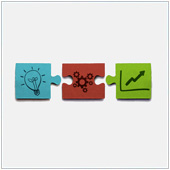The vast majority of countries in the West have some requirement or law that states that businesses need to meet the needs of their employees. For many businesses this means implementing systems that afford a duty of care and allow employees to do their job adequately. As such, it is a good idea for companies to have an accessible technology plan.
What Is Accessible Technology?
Accessible technology, also commonly referred to as assistive technology, is the idea of creating or implementing technology and systems that cater to employees with disabilities. While not every company will have or require accessible technology, it is required by many countries that businesses meet the needs of disabled employees.
To that end, it is a good idea to develop a plan on how to implement accessible technology. To help, here are five steps you could take:
1. Defining Your Strategy
The accessible technology strategy should be the first thing you develop as it will be the foundation of the overall plan. When looking at your strategy you should define how accessible technology fits into your overall organization plan and how it will fit with your existing strategies.
What you are looking to do is to figure out how this form of technology will fit with existing systems and increase overall operating effectiveness. From here, you can define the overall objectives, budget, and vision for the plan.
2. Identifying Requirements
In this step, you should look closely at existing technology in the organization and the needs of your employees. Because each company is different and the needs of employees are different you should be careful to also identify the technology needs of your employees.
When looking at both the needs and existing systems you can work to come up with an overall set of requirements, along with a general priority. For example, will you need to modify existing computers or purchase new ones?
The key idea here is that you need to figure out exactly what you need.
3. Picking The New Technology
Once you have identified what changes you need to implement, what new technology you will need, and your budget, you can then begin looking for the best solutions. The most effective way to do this is to work with it experts like us who can help you find and integrate the best technology and changes that will meet your adaptive technology needs.
4. Implementing And Training
Once you have defined the changes, and new technology to integrate, you need to implement it. This may include altering physical devices and machines where necessary, and then testing the systems to make sure they are working properly.
It is also be a good idea to train your employees who will be using the systems, and the team who will be managing the systems.
5. Maintaining
As with all tech systems, it is important to realize that the solution you implement will not work forever, and will eventually require maintenance, updating, or even replacing. You should take steps to audit systems on a regular basis to ensure they are still meet the needs of your company and employees.
This can be a time consuming and potentially costly step, especially if you neglect it. We strongly recommend working with a company like ours, who can help manage your solution and ensure that updates and any necessary changes are implemented when they are needed, and that should needs change, systems are subsequently updated to meet the new requirements.
If you are looking to implement accessible technology in your business, contact us today to see how we can help.
Published on 18th June 2014 by Jeanne DeWitt.


